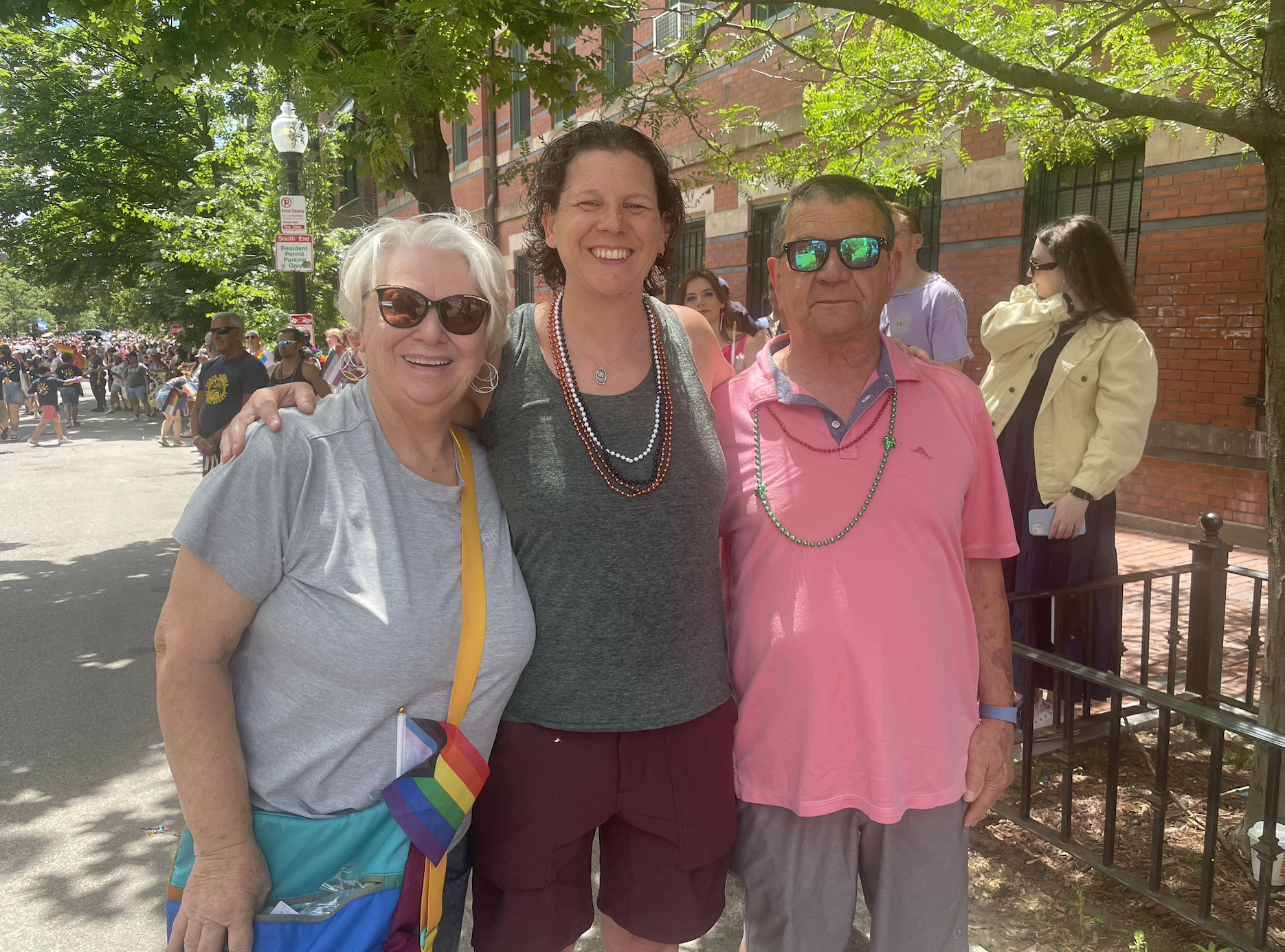Pride is 365
As Pride month comes to a close, many businesses and organizations will lower their flags, fold them up and put them back in the closet to collect dust for the next 11 months. On the other hand, for many of us, Pride is something we honor every day of our lives.
June was extra special for me this year as I attended the Boston Pride Parade with my parents. They collected beads, got a high-five from our governor, were impressed with the pole dancers, cheered for parents, school groups and local health organizations and so much more. This was a small glimpse into my world. Sharing this experience validated what I have always known of them; unconditional love and support. I have many memories from early life in which they modeled this love and support to family and friends. The bigger impact was how I witnessed them treat community members who were on the fringe. This imprint laid the groundwork for me to grow into the person I am today, both in identity and those I work with.
I remember the first time someone called me a “dyke,” leaving gut-wrenching, visceral feelings. At the same time, I hold onto the tender and heartwarming moment when an 11 year old shared with me that I was the first adult they felt safe to come out to as part of the LGBTQIA+ community. Many folks within the queer community simultaneously hold opposing feelings to complex experiences. This shows up in relationships with family, religion/spirituality, and politics, just to name a few. Members of the LGBTQIA+ community are at greater risk of experiencing disparities when it comes to health, education and economics. In 2003, Ilan Meyer developed the minority stress model. The minority stress model specifically refers to the discrepancy and conflict that arises between the values of the minority group and the dominant culture or society, and has been largely conceptualized and utilized within the sexual minority health arena (Meyer, 2003). Minority stress is created by stigma, discrimination, bullying, or a perception of bias is credited as the main detractor to the mental health of LGBTQIA+ youth. The queer community is more likely to report mental health concerns such as depression, substance use disorder and increased self-harm and death by suicide.
Key findings from the 2023 Trevor Project National Survey on Mental Health of LGBTQ Young People:
41% of LGBTQ young people seriously considered attempting suicide in the past year—and young people who are transgender, nonbinary, and/or people of color reported higher rates than their peers.
A majority of LGBTQ young people reported being verbally harassed at school because people thought they were LGBTQ.
Nearly 1 in 3 LGBTQ young people said their mental health was poor most of the time or always due to anti-LGBTQ policies and legislation.
Nearly 2 in 3 LGBTQ young people said that hearing about potential state or local laws banning people from discussing LGBTQ people at school made their mental health a lot worse.
Support for the queer community, especially the kiddos, is greatly needed. Another report from the Trevor Project finds that a LGBTQIA+ youth that has just one supportive adult (caregiver, parent, teacher, coach, etc.) can reduce the risk of suicide by over 40%. I recognize the privilege I hold in having a loving and supportive network of family (both nuclear and chosen) and friends.
"When we can see ourselves as we truly are and accept ourselves, we build the necessary foundation for self-love." -bell hooks
While I have been out for most of my adult life, only in the last 10 years or so, I have made greater intentional and concerted efforts in using my voice to advocate for myself and those who feel silenced. I show up to rallies and vigils, offer psychoeducation and resources, invite people into conversations, speak up when microaggressions have been used towards me and others, and hold space for folks to process whatever they might be experiencing.
Those who consider themselves allies can show their pride year round too. I actually feel it is important for them to speak up in spaces when queer folks are not around. Allies can show up in all the ways LGBTQIA+ can, just from a different perspective.
Below are resources I have found to be extremely valuable, for both the queer community and those wanting to learn more about us.
Books:
Gay New York by George Chauncey
A Queer History of the United States by Michael Bronski
Where Am I Going to Go? Intersectionality Approaches to Ending LGBTQ2S Youth Homelessness in Canada and the U.S.
Queer Magic- Tomas Prower
Hot August Night/1970- The Forgotten LGBT Riot by Steven Dansky
Documentaries
Paris is Burning
Wonderfully Made- LGBTQ+R(eligion)
A Secret Love
Ahead of the Curve
Gen Silent
Organizations
There are many ways to stay connected to the LGBTQIA+ community other than the month of June. I am proud to live the life I have and will never take that for granted, as I stand on the shoulders of all those who came before me.

